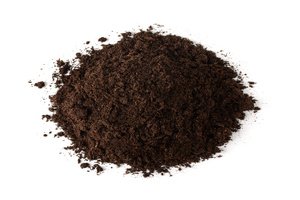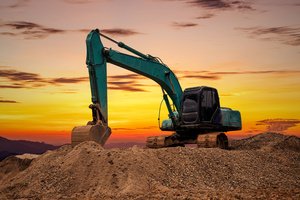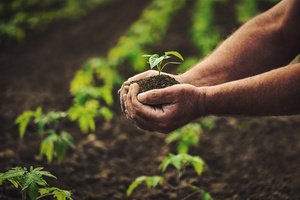Screened topsoil provides the ideal conditions for many types of gardening projects, but its higher price compared to other types of soil can be a concern for gardeners on a budget. Here is a look at what screened topsoil is and some helpful tips for using it in a cost-effective manner.
What Is Screened Topsoil?

Screened topsoil is soil that is run through mesh of a specific size to break it down into smaller and more consistent particles. It is available in a range of sizes, although 3/4 inch and 5/8 inch are the most popular measurements. The screening process filters out sticks, rocks, large clumps and anything else that is larger than the size of the opening in the screen.
This process can be expensive, which is why screened topsoil commands a higher price than its unscreened counterpart. Here are seven ways to make sure you get the most for your money when working with screened topsoil.
Only Use Topsoil Where Necessary
Before purchasing screened topsoil, it is important to understand what applications it is intended for to avoid placing topsoil where it is not necessary. Areas that have poor-quality soil where you intend to plant a garden are the best places to use screened topsoil because it provides the ideal conditions for water, nutrients and oxygen to reach the plant’s roots.
Screened topsoil should be used for planting vegetable gardens, trees or shrubs; forming a base for a flower garden; and filling in small areas of a lawn where you need soil that is easy to rake and grade. Unscreened topsoil can be used instead for other landscaping.
Determine How Much Topsoil You Need
Because screened topsoil is significantly more expensive than its unscreened counterpart, you will want to make sure that you do not order more than you need. Therefore, you must take careful measurements of the area’s depth and square footage so you can determine how many cubic feet of screened topsoil you will need to order.

One measurement many people get wrong is the depth. If you will be spreading screened topsoil across a garden bed, make sure you order enough to allow for a layer that is at least two inches deep. If you’ll be using it for a new lawn, you will want a layer of three to six inches of topsoil to be laid prior to laying sod or sowing seed. The precise depth will depend on the quality of the existing soil in your lawn.
Take care not to spread your topsoil too deep. In addition to being expensive, topsoil that is laid too thick in gardens can suffocate plants.
Make Your Own Screened Topsoil
Industrial screened topsoil that you purchase from a garden store is screened using big machines that separate finer particles of soil from bigger pieces of debris such as stones, plant roots and twigs. A front-end loader is used to feed soil into the machine, and it then falls onto a screen that is vibrated quickly in order to loosen the materials. After the finer particles of soil fall through the screen, the debris is discarded. Then, the processed topsoil is collected, brought to warehouses to be bagged and sent to garden centers to be sold by the truckload.
However, if you are trying to use screened topsoil on a budget, you might consider screening your own topsoil. This is something that you can do at home quite easily, but it is only practical if you need to screen a relatively small amount of topsoil.
You can purchase a mesh screening dish made specifically for this purpose, or you can make your own if you are particularly handy. Once you have your dish, place your unscreened topsoil inside and work over a wheelbarrow to catch the soil as you screen it. Then, simply shake the screening dish back and forth until it is empty and all of your newly screened soil has made its way into the wheelbarrow. Any clumps, rocks and sticks that were in the soil will stay in the dish and can be discarded easily. Then you can then bring your screened topsoil to the area where you need to plant it.
If it is not fine enough for its intended purpose after the first screening, you can screen it again with a screening dish that has smaller gaps for finer screened topsoil.
Aerate the Ground Before Adding Topsoil
One way to make sure that you do not use more screened topsoil than necessary is by aerating the ground before you add it. This entails scoring the ground using small and shallow holes in order to break up any compacted existing soil. This will allow nutrients, oxygen and water to reach the roots of the plants better, which means you may not need to add as much topsoil. While aerating, it is important to avoid damaging the roots around trees and shrubs as this can leave them susceptible to pests and diseases.
Ensure the Screened Topsoil Is Irrigated Properly
If your screened topsoil is regularly left dry at its surface, it will be vulnerable to erosion by wind. This means that the amount of topsoil that you have placed will decrease over time and will eventually need to be replenished. You can prevent this by making sure that the area is appropriately irrigated at the surface.
Consider Planting Vegetation
Another way to protect your screened topsoil from erosion is by planting vegetation such as clover to cover the ground. This can reduce runoff and restrict the growth of weeds, prolonging the useful life of your screened topsoil.
Rotate Your Crops

When you harvest the same crops over and over again in a garden plot, toxins may build up in the topsoil and lead to an imbalance of nutrients. Eventually, the topsoil will no longer be conducive to growth and will need to be replaced entirely.
To extend the lifespan of your screened topsoil, grow different types of crops in different seasons. Research how to rotate crops effectively according to your gardening zone and the type of soil you have.
Contact the Soil Experts at Dirt Connections
Properly screened topsoil can make all the difference in your gardening efforts. If you are looking for screened dirt in the Northern Virginia area, reach out to the soil experts at Dirt Connections. We sell screened and unscreened topsoil by the truckload and can deliver it directly to your site. Our experts will also be happy to advise you on the best dirt or soil for all of your residential and commercial projects.
Summary

Dirt Connections was started with one goal in mind: providing quality residential and commercial construction services to clients on time and on budget. Reach out for more information on how we can support your next project.
For your convenience our estimates are free and by appointment. Call 703-940-9949 for a free estimate today!









































